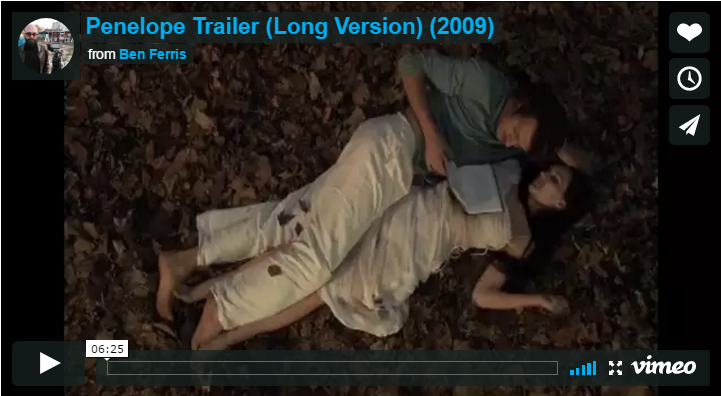Practitioners' Voices in Classical Reception Studies
ISSN 1756-5049
You are here
- Home
- Past Issues
- Issue 8 (2017)
- Ben Ferris
Ben Ferris
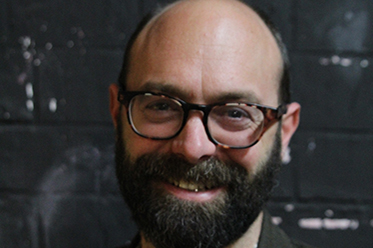 Ben Ferris is a film writer/director whose films have screened at festivals throughout the world (in Paris, Athens, New York, Tokyo, Karlovy Vary, Zagreb, Sarajevo, Skopje, Singapore, Sydney). His short film The Kitchen (2003) won the Grand Prix at the Akira Kurosawa Memorial Short Film Festival in Tokyo in 2005, and his short film Ascension (2004) won the Grand Prix at the 4th One Take Film Festival in Croatia in 2004.
Ben Ferris is a film writer/director whose films have screened at festivals throughout the world (in Paris, Athens, New York, Tokyo, Karlovy Vary, Zagreb, Sarajevo, Skopje, Singapore, Sydney). His short film The Kitchen (2003) won the Grand Prix at the Akira Kurosawa Memorial Short Film Festival in Tokyo in 2005, and his short film Ascension (2004) won the Grand Prix at the 4th One Take Film Festival in Croatia in 2004.
His debut feature film Penelope, an Australian-Croatian co-production, screened in National Competition at the 56th Pula Film Festival in Croatia in 2009, and won a Van Gogh Award for Best Fantasy Film at the Amsterdam Film Festival in 2010. His second feature film, 57 Lawson (2016), captures daily life in a social housing building in Redfern, under the shadow of impending development. Ben is currently the Artistic Director of the Sydney Film School which he co-founded in 2004. He was the curator of the Sydney Cinémathèque in 2015, and his writings on cinema have been published worldwide in both French and English.
Leanne Glass was awarded her PhD in Classics in 2015 from the University of Newcastle, Australia for her thesis, National Identity, the Auteur and the Greek World on Film. This interview was recorded via Skype on 13th January 2016.
Leanne Glass. Hi Ben, thank you for giving me the time to discuss your mesmerising film Penelope. What current projects are you working on? Are you still working in the ancient world or have you moved away from this area in your films?
Ben Ferris. I’ve changed my focus for the first time because I’ve always been in the ancient world, more or less. For this new project I’m using a stylistic aesthetic. I’m shooting a film in the social housing buildings in Redfern and focusing on one block in particular in Moorehead Street. This is an area that is currently under significant pressure from developers and the government to potentially redevelop with new train lines. I’m working with the local tenants in the area and telling a story about them and their living space. The impetus of it is almost like an archive project. It has this type of preservation feeling to it particularly in the context of what’s about to happen.
It’s an ensemble piece, which has been influenced by the works of Chantal Akerman, the Belgian filmmaker, who unfortunately died last year. I suppose you’d classify it as hyper-realism, it’s a mode where I’m interested in capturing quite mundane activity but through a stylized lens. You end up dramatizing or lending some important sense of interest in these mundane activities. It’s quite a different project.
LG. I wonder whether in the real world these activities are really mundane? They all mean something, even if it’s just something like cleaning the dishes. To one person this whole process may seem mundane but to another it might be really important, so there’s two ways of looking at it.
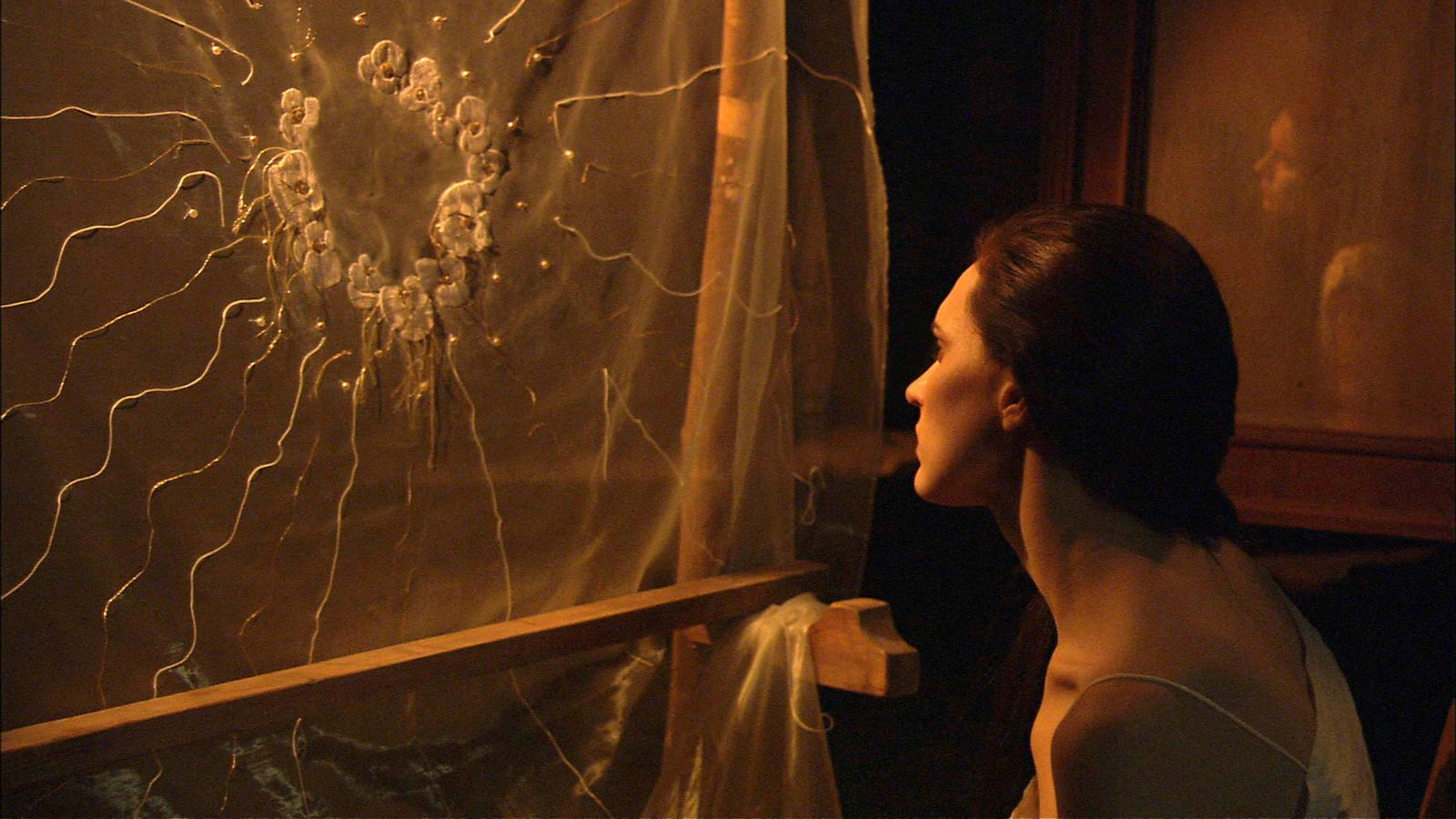
BF. Well, that’s exactly right and in a sense I’m fascinated with this idea of looking at certain activities that are generally considered quite small or insignificant. For instance, there’s a scene where there are a number of immigrants. One is Russian and she essentially recites a recipe for a chocolate raspberry cake. We experience her talking about 500gms of this, a tablespoon of that and it gets down into this detail, which I’m really interested in because these things do matter at some level.
I guess this piece could be considered a slight pièce-de-résistance in the way these people may be viewed. You break down their everyday activities enabling you to see what others deem as expendable.
LG. Carl Dreyer seems to have done something similar in his film Ordet. It’s about an everyday family who experience an extraordinary series of events. But to capture that normality Dreyer recreated an entire kitchen, including its utensils. The film was criticised for its slow pace but if you understand that this is the mundane of everyday life then he’s captured it beautifully. He was also into imagery with very little dialogue, which is reminiscent of your Penelope.
BF: Dreyer is very interesting and Ackerman points back to Dreyer so you get a full cycle going. And funnily enough, I was shooting last night and what I was doing was reconstructing a bathroom in the studio. I’m working with the production designer at the moment and you almost need to go into more detail working in a studio to sell the feeling of realism. Hyper-realism is interesting to me because you get this strange tension in the film; that is, between realism and mannerism. There’s a tension with this type of thing. Traditionally they’ve been separated on the spectrum.
Penelope is more mannerist and highly stylized but there are moments, such as when Penelope is laid out on the bed and one of the maids dips the cloth in the water bowl, where it slips into hyper-realism. The sequence is painfully slow to watch but it’s that sort of detail that offers a good example, where the gesture is so small that it verges on complete obsolescence. But I find something very interesting happens in that space and so I guess if there’s something that I’m carrying on from the Penelope project it’s along those lines. The minimalism in Penelope has continued into this project.
LG. There’s a lot of minimalism in Penelope, and its impact forces the spectator to consider every little nuance to determine meaning. The film’s slow, deliberate pace also accentuates certain aspects of Penelope’s story, such as her conscious and unconscious states, and longing for Odysseus’ return. The seamless transition or merging of her dreams with episodes of wakefulness results in some uncertainty as to whether she’s awake or asleep, introducing the idea that Penelope constantly seems to be in the midst of a waking nightmare.
BF. Yeah, it’s something that’s fairly distinctive, and something that I’m really interested in as a director is working with rhythm, biorhythms and body language. I’m interested in choreography in almost a classical sense and a lot of the scenes that I’ve worked on with Penelope and other films are choreographed to music scores in order to build sense of rhythm in a piece. And as you say, it’s trying to tap into the logic of Penelope’s gestures of anguish, or how anguish might kind of manifest itself in a physical way and affect behaviour and perhaps the way we look at the world around us. Where perhaps a symptom of that is a confluence of the mental world or psyche and the external world, and the barriers that can break down.
LG. Every time I look at the film it forces me to reconsider whether I’ve truly understood a particular scene. For example, the final scene featuring Penelope killing the suitors is vague at best. I’m trying to decide whether she’s dreaming or, in fact, has killed them. It makes me question how we view myth, dreams, the psyche etc. as, in your film, these aspects all roll into one coherent moment, which can be viewed from many different angles. Was this one of your objectives or have I read too much into it?
BF. I’m smiling as you say that because that’s absolutely the intention. I was quite inspired by the description in Book XIX of the Odyssey where Penelope talks about the Gates of Horn and Ivory. It’s such an odd reference and I find it very mystical. Just given the amount of sleeping and dreaming that she does in the Odyssey, this reference kind of propelled me to treat her within that framework. The idea that some dreams can be less truthful than others is a pretty interesting concept. Obviously, in the modern age, this idea would resonate in a whole new way with someone like the psychoanalyst C. J. Jung but the description fascinated me to such a point that the film tries to embody this passage in the Odyssey.
LG. There are many women featured in ancient Greek myth – is that passage the reason you were drawn to Penelope, or was it something else?
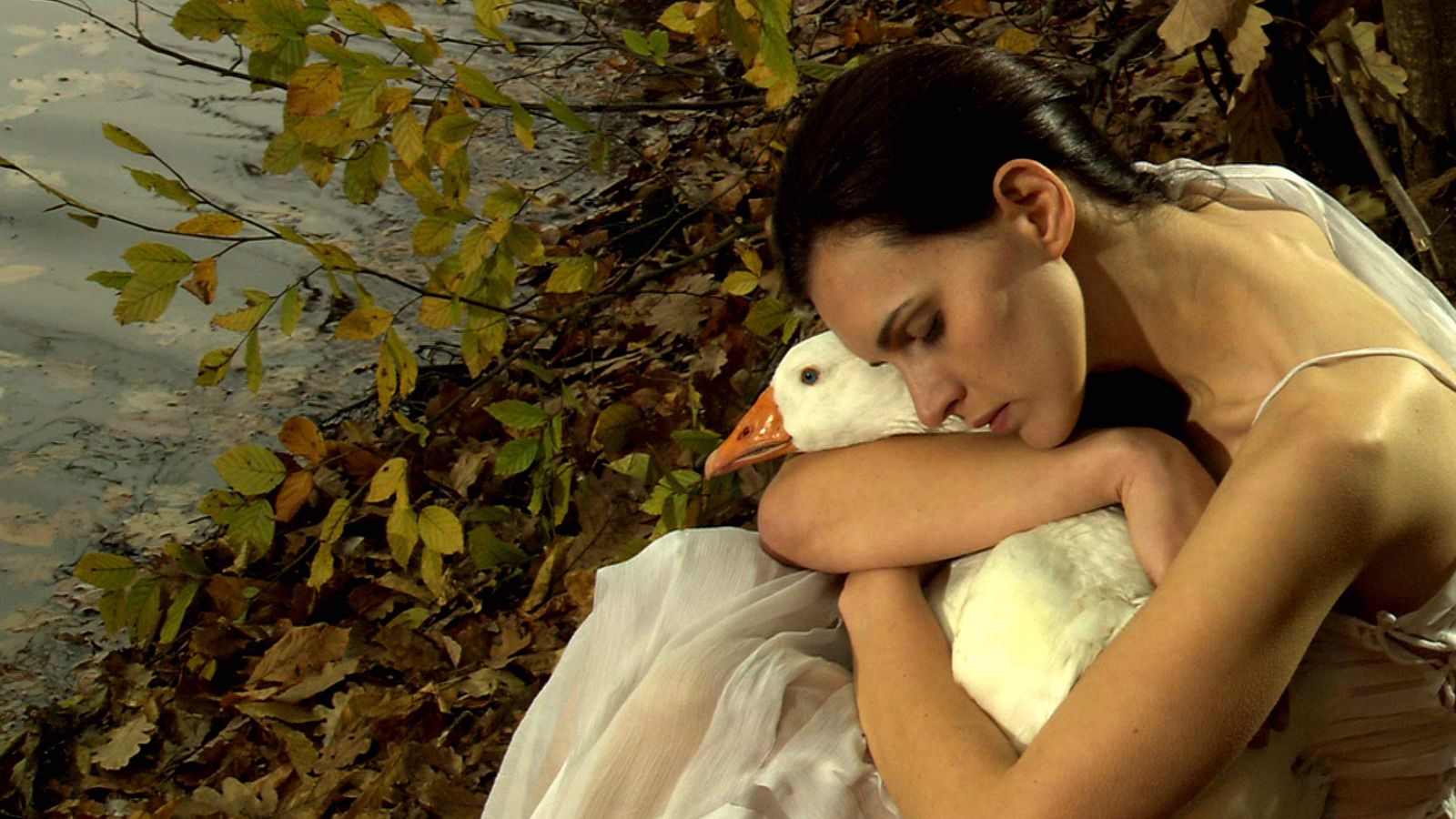 BF. Actually, the truth of it is a little bit mystical itself. In the sense that the idea originally came from a dream that I had, which is probably fitting for the subject matter. It was simply of a woman, alone, in a large space, which I defined as a kind of mansion. In fact, the film’s opening sequence is almost a frame-by-frame replica of that dream right until we drift over the maids and come to the suitors. It was more a case of a feeling and wanting to give life to it in some way and then working out who that figure could be. It wasn’t a far reach when, at some point, I went back to the Odyssey and then it kind of clicked, that the feeling and mood could really fit nicely with Penelope’s character, giving the story a mythic framework.
BF. Actually, the truth of it is a little bit mystical itself. In the sense that the idea originally came from a dream that I had, which is probably fitting for the subject matter. It was simply of a woman, alone, in a large space, which I defined as a kind of mansion. In fact, the film’s opening sequence is almost a frame-by-frame replica of that dream right until we drift over the maids and come to the suitors. It was more a case of a feeling and wanting to give life to it in some way and then working out who that figure could be. It wasn’t a far reach when, at some point, I went back to the Odyssey and then it kind of clicked, that the feeling and mood could really fit nicely with Penelope’s character, giving the story a mythic framework.
LG. This sense of dreaming and the seamless transition between Penelope’s episodes of wakefulness and dreams reminds me of Molly Bloom’s stream of consciousness in Chapter 18 of James Joyce’s novel Ulysses. Were you influenced by the fluidity of her thought process?
BF. I certainly used Joyce’s text as a reference. Whether I was conscious of that type of influence to that level I’m not sure. It wasn’t a deliberate strategy to emulate Joyce in that sense. But I do think what is happening is I’m displaying a scepticism, or I’m nervous about approaching Penelope from simply one vantage point. I’m interested in a process of deconstruction that goes on in the film about her.
LG. In what way?
BF. Well, ultimately, I’m not just accepting Penelope as a static identity that can be kind of cut-and-paste from the Odyssey. I think Joyce is doing the same thing. I think that’s what’s going on. I’m not sure I was conscious of Joyce being an influence in the way you mentioned, but I did like the deconstruction of her character in his work so there’s a similar impulse perhaps.
LG. I find your interpretations of Penelope and Odysseus are unique. They are, like Joyce’s novel, two people caught up in a war. Penelope, a woman who is alone and longing for her husband’s return and Odysseus who is reluctant to go to war. Yet Telemachus is absent. Penelope reveals to Odysseus that she is pregnant but we never see Telemachus. What was the reason for leaving him out? For his absence?
BF. I guess this is where Penelope becomes more of a Molly Bloom figure. That’s where I am acknowledging the Joycean interpretation of her, and of course the Telemachus figure for Molly is a very tragic figure because his ‘presence’ ends in a miscarriage; in fact, Molly and Leopold bury their son. That’s how Joyce influenced my interpretation of his character. And from a dramatic viewpoint, having Telemachus around meant that another male presence could easily become a substitute figure for Odysseus. I was more interested in the loss of that figure entirely because his absence emphasises Penelope’s isolation.
LG. Reconsidering Odysseus in his role as the reluctant hero, was the Bosnian War in the back of your mind during the production of this film?
BF. Yeah, it was. There’s no way to avoid this. We were filming in Croatia in 2007/8. There’s still a sense in the picture of its recent aftermath, it continues to be on everybody’s minds and in the national consciousness. It was hard to have a conversation where it didn’t come up at all, either in terms of the impact on someone’s life, or family or, geographically, where there’s evidence of a ruin or destruction. So, yes, its influence was there during filming and it certainly adds a kind of relevance to the story in that context.
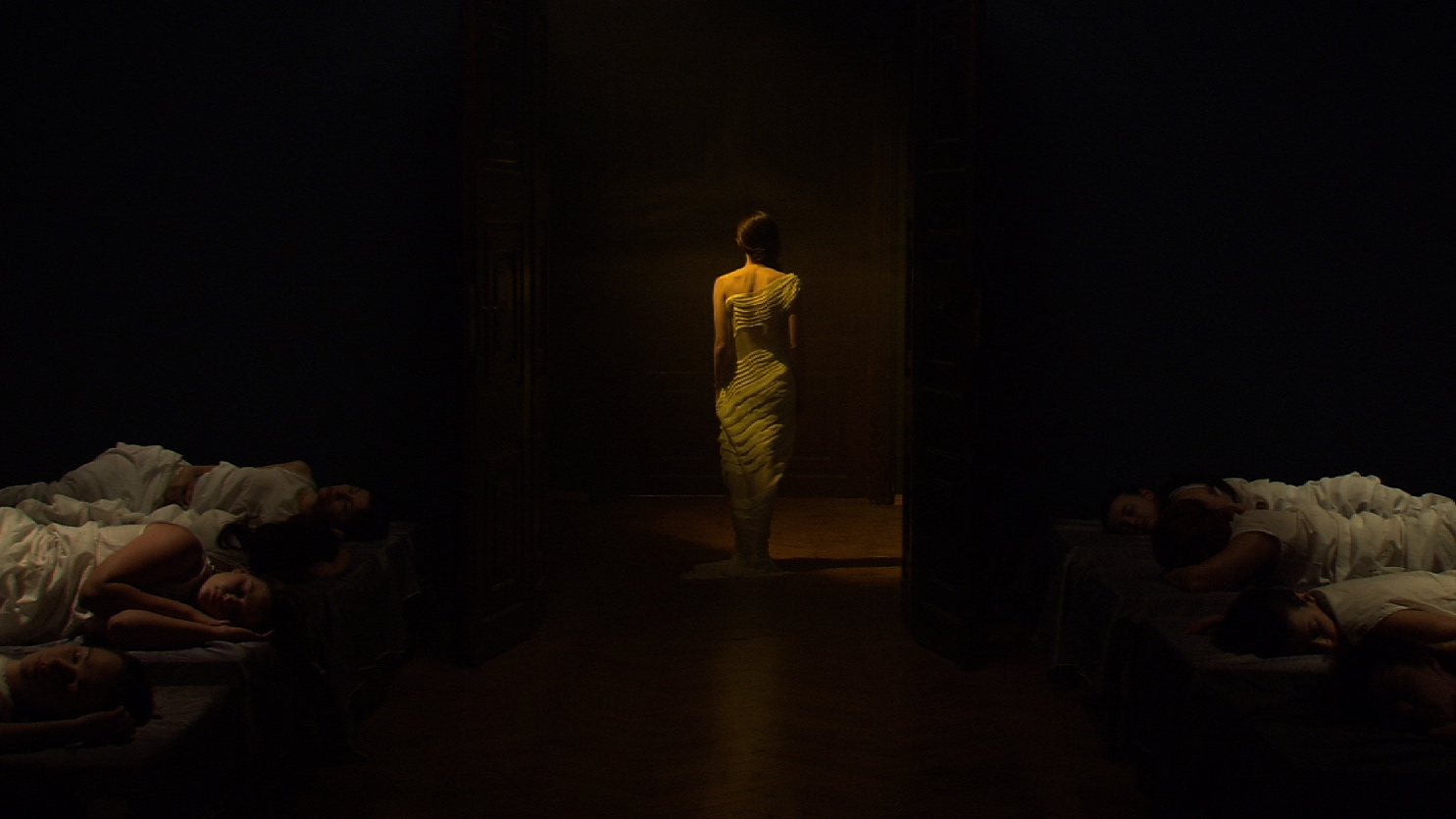
LG. Which brings me on to the costume design for the women. I know Jenny Tate, the film’s production designer, loved Japanese art and design. The costumes that Penelope and her maidens wear, which seamlessly befit both day and night, not only pay homage to their Japanese roots but their dresses also represent a modern interpretation of the ancient Greek peplos. But were there any other reasons for this Japanese influence?
BF. There is a context in a way. The film was initially funded through the Kurosawa Foundation and it was on the back of a short film that I’d made called The Kitchen, which, incidentally, entailed rebuilding a kitchen in a studio. The film won the Kurosawa Award in Tokyo in 2005. At the time, it was described by some critics as incredibly Japanese because of its likeness to Noh Theatre and I was kind of fascinated by that. I think what we were talking about before in terms of minimalism and rhythm and counter-points of very slow movement, which is suddenly broken by a fast movement is reminiscent of Noh Theatre. I’m interested in Japanese myth and Jenny Tate was a big influence as well. She responded to the Japanese-ness of my previous work and we built a relationship around that which involved travelling to Tokyo on numerous occasions. So there’s definitely a Japanese presence in the film. I’m not sure that there’s more I can say about that except that I was exposed to quite a bit of Japanese culture just prior to making the film.
LG. Returning to the portrayal of the maidens I’d like to discuss your interpretation of their attitude after the ‘rape scene’. Their carefree manner is unexpected especially after such a violent and disturbing scene. The hanging of the sheets offers an entirely different interpretation of their ‘hanging’ in the Odyssey and I notice they kind of replicate Penelope’s shroud. Could you elaborate on their divided attitude towards their mistress’ distress?
BF. This scene does seem to get a lot of attention and its content does shock people. I talked before about the static nature of the Homeric Penelope and this illustrates my interest in the instability of myth. The way that myth is malleable and can be re-interpreted to suit our needs at different times and for different cultures. This is a very unstable moment in the film because people who are familiar with Penelope lose confidence in what their interpretation or knowledge of her story is. It is very deliberate. I talked before about the ‘Gate of Dreams’ but the other image that you’ve got to deal with when reconsidering Penelope’s tale is the weaving and unpicking of her shroud. My embodiment of this aspect is applied in the film’s narrative structure, replicating Penelope’s symbolic creation and erasure of her story in the Odyssey. It was about the way she could construct a narrative to suit her needs, it’s not just about physically completing the shroud, that’s the tangible part, but it’s about weaving and unpicking this narrative to achieve her ends. So I think I’m interested in that and I apply that thinking in the telling of this story.
LG. The imagery in this film is beautiful, with many scenes reminiscent of paintings, which you subtly make reference to during the film’s opening as the camera pans across a fresco depicting the mythic tale of Artemis and Actaeon. As a major component of the film’s narrative, this focus on the pictorial lends itself to the idea that what we are watching is Penelope’s almost silent, personal soliloquy. Is this purposeful and, as an extension of this, does your emphasis on imagery as narrative act as a metaphor for the silence of the female voice?
BF. Yeah, that’s very interesting. I think in terms of soliloquy what’s lending itself to your interpretation is that the dream space is such a personal space, especially when we think about Penelope’s dreams in the Odyssey. I was really struck by that idea. I consider her dreams to be a technique for the ancient epic author to literally get inside someone’s head. A dream is the closest thing an epic speaker has to the modern concept of interior monologue. Maybe the dreaminess of the film lends itself to that reading. It’s interesting because it destabilises the idea of objective narratives; that is, a fixed point of view. To give you an example, some viewers aren’t even sure that Odysseus is real or if that is a projection of her mindset.
And in terms of second point on silence and its relation to womanhood – absolutely! And the suitors are a pretty vocal bunch by contrast.
LG. I’ve always referred to the suitors as the ‘hungry horde’. I see them as a metaphor, especially when seen gorging on food in your film, for unapologetic lust and desire, for Penelope and especially her estate. There seems to be a reduction on the strength of the male placing the focus on the female – would you agree?
BF. Yeah, interesting. I feel that Penelope’s silence has a kind of power in the way that the suitors’ words don’t. I’m interested in the power dynamics between the genders and I think the silence lends her a strength that is not necessarily representative of the female enclosed in the woman’s quarters. It’s more of a modern interpretation that adds to the visual strength of the film.
LG. Thanks Ben. The film is breathtakingly beautiful and I’m looking forward to seeing your future cinematic releases.
Find out more...
Penelope Trailer (Long Version) (2009) from Ben Ferris on Vimeo.
